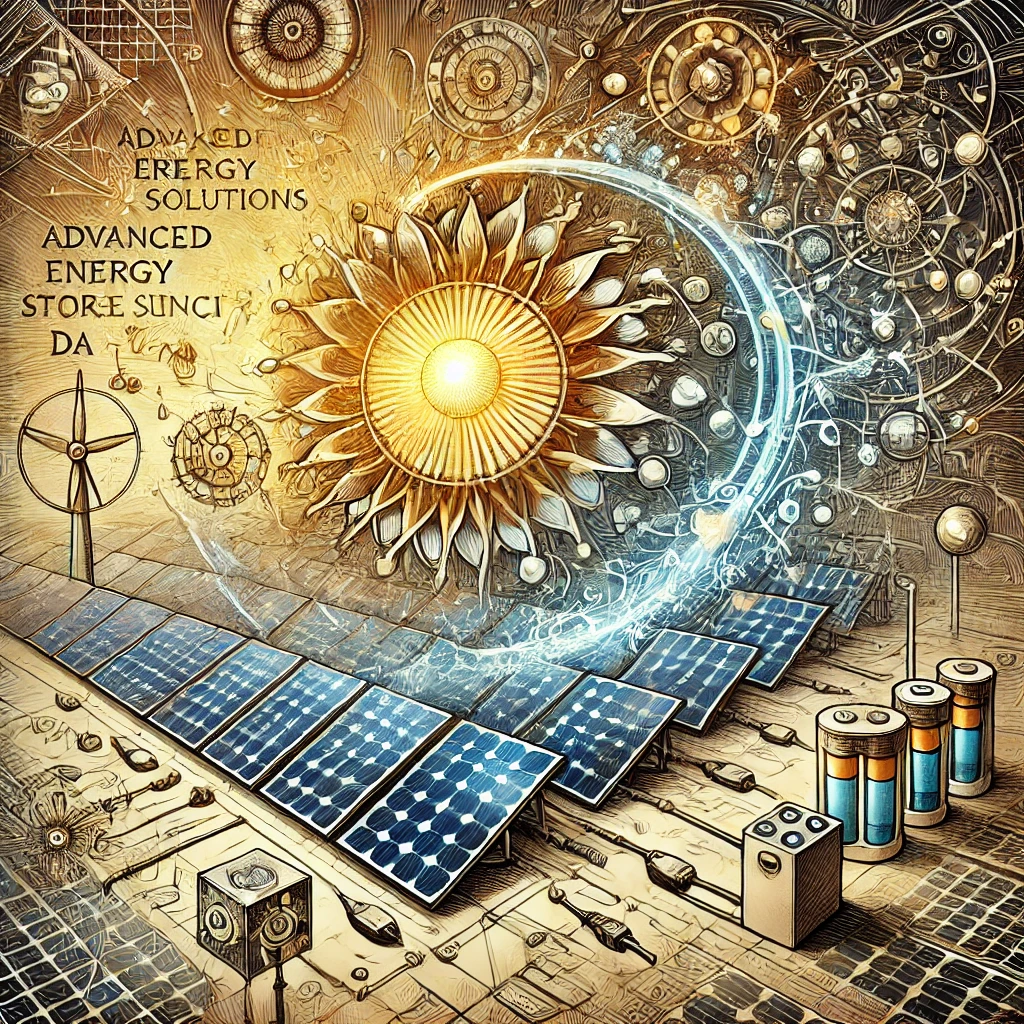
- Published on
- Authors

- Name
- ric de yuga 😄
How Solar Panels Work
convert sunlight into direct current (DC) electricity, which is then converted to alternating current (AC) for household use. However, new methods propose capturing the sun's natural AC energy directly, skipping the conversion and potentially improving efficiency. These advancements, coupled with smart grid technologies and energy storage solutions, are set to transform the solar energy landscape.
Solar panels are composed of photovoltaic (PV) cells, which convert sunlight into electrical energy. When sunlight hits the PV cells, it excites electrons, creating an electric current. This current is initially DC, which must be converted to AC for most household applications.
Traditional DC to AC Conversion
The conversion from DC to AC involves an inverter, which can introduce inefficiencies. The process is typically as follows:
- DC Generation: PV cells generate DC electricity.
- Inversion: An inverter converts DC to AC.
- Usage: The AC electricity is used to power household appliances.
Inverter Efficiency
Inverters typically operate at 90-95% efficiency, meaning some energy is lost in the conversion process. This inefficiency prompts the exploration of methods to harness AC directly from solar energy.
Proposed Methods for Capturing Natural AC Energy
Direct AC Capture
Some researchers propose designing PV cells that can oscillate the DC current they generate into an AC form, eliminating the need for inverters. This involves the use of advanced materials and oscillating circuits embedded within the solar panel itself.
Formulas and Theoretical Foundations
Oscillation Circuit Efficiency:
Where:
= AC efficiency = Output power as AC = Input power as DC
Maxwell's Equations Adaptation: Utilizing Maxwell's equations to design materials that naturally oscillate at desired frequencies:
\ \nabla \cdot \mathbf{E} = \frac{\rho}{\epsilon_0}, \quad \nabla \cdot \mathbf{B} = 0, \quad \nabla \times \mathbf{E} = -\frac{\partial \mathbf{B}}{\partial t}, \quad \nabla \times \mathbf{B} = \mu_0 \mathbf{J} + \mu_0 \epsilon_0 \frac{\partial \mathbf{E}}{\partial t} \These equations help in designing oscillating PV cells that can generate AC directly.
Capturing AC from Natural Sunlight
Recent studies suggest that sunlight contains components that can induce oscillatory motion in certain materials. By aligning PV cell materials to these components, it may be possible to generate AC directly.
Photonic Crystal Design
Photonic Band Gap Structures: Photonic crystals are engineered materials with periodic variations in their refractive index, creating a band gap that prevents light propagation in certain wavelength ranges. By designing PV cells with photonic crystals that have specific band gaps, it's possible to induce AC generation directly from sunlight. The relationship between the energy and the wave vector in a photonic crystal is given by:
Where:
- is the energy of the photonic state
- is the reduced Planck's constant
- is the angular frequency
- is the wave vector
By carefully selecting the materials and geometries of the photonic crystal, researchers can create band gaps that align with the energy levels of sunlight, allowing for the direct generation of AC electricity.
Wave Equation Application: The behavior of electromagnetic waves in a medium is governed by the wave equation, which relates the electric field to the material properties of the medium:
Where:
- is the Laplacian operator
- is the electric field vector
- is the magnetic permeability of the medium
- is the electric permittivity of the medium
- is time
By tailoring the material properties ( and ) of the PV cells, researchers can create conditions that favor the generation of AC electricity directly from sunlight. This involves designing materials with specific dielectric and magnetic properties that respond to the oscillating nature of sunlight, inducing an alternating current in the PV cells.
The application of photonic band gap structures and the wave equation in PV cell design opens up new possibilities for direct AC generation from solar energy. By leveraging these principles, researchers can develop advanced materials and geometries that harness the sun's natural AC energy more efficiently, leading to improved solar panel performance and reduced system complexity.
Integration with Smart Grid Technologies
Direct AC capture from solar panels opens up new possibilities for integration with smart grid technologies:
- Real-time Monitoring: Smart meters and sensors can monitor AC generation and consumption in real-time, enabling better grid management.
- Load Balancing: Direct AC generation can help balance the load on the grid by providing AC power during peak demand periods.
- Frequency Regulation: The natural oscillation of AC from solar panels can help regulate grid frequency, enhancing stability.
Energy Storage Solutions
While direct AC capture improves efficiency, it's essential to consider energy storage solutions for times when the sun isn't shining:
- AC-compatible Batteries: Developing batteries that can store AC energy directly, reducing conversion losses.
- Supercapacitors: Using supercapacitors to store and release AC energy rapidly, complementing battery storage.
- Hydrogen Fuel Cells: Converting excess AC energy into hydrogen for long-term storage and later use in fuel cells.
Benefits of Direct AC Capture
- Increased Efficiency: Eliminating the inverter can improve overall system efficiency.
- Cost Reduction: Reducing components lowers the cost of solar energy systems.
- Simplified Design: Direct AC capture simplifies the solar panel system design.
- Grid Integration: Seamless integration with smart grid technologies for better energy management.
- Energy Storage Compatibility: Enabling more efficient energy storage solutions.
Current Challenges and Research Directions
While promising, direct AC capture from solar panels faces several challenges:
- Material Development: Advanced materials required for direct AC generation are still in the research phase.
- Durability: Ensuring the longevity and durability of oscillating PV cells under various environmental conditions.
- Economic Viability: Balancing the cost of new materials and technologies with the efficiency gains.
- Grid Infrastructure: Upgrading grid infrastructure to accommodate direct AC integration and smart technologies.
Conclusion
Harnessing the sun's natural AC energy directly is an exciting frontier in solar technology. By eliminating the need for DC to AC conversion, we can enhance efficiency, reduce costs, and simplify system designs. The integration of direct AC capture with smart grid technologies and advanced energy storage solutions paves the way for a more sustainable and reliable energy future. Ongoing research and development are crucial to overcoming current challenges and realizing the full potential of this innovative approach.
In the words of physicist Richard Feynman, "Nature isn't classical, dammit, and if you want to make a simulation of nature, you'd better make it quantum mechanical."
I believe this holds true as we are trying to classically mimic the Quantum Process of Photosynthesis
If You Want To Read More About Photosynthesis from a Quantum Perspective Check Out Here
Checkout How Quantum Computers Could be Used to simulate this idea to improve Solar Cells Here
